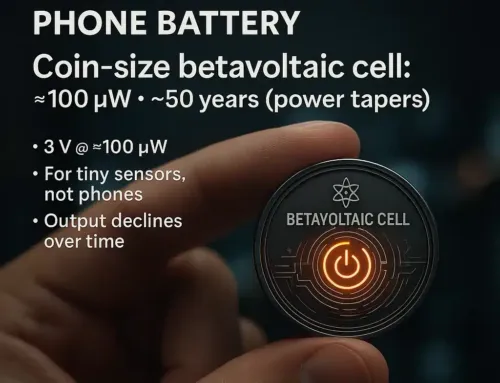
Approx. read time: 4.9 min.
Post: LiDAR vs Radar: Comprehensive Analysis and Safety Insights
LiDAR vs Radar: Comprehensive Analysis and Safety Insights.
Understanding LiDAR vs Radar: Pros, Cons, Technical Details, and Safety Considerations
In the realm of remote sensing technologies, LiDAR (Light Detection and Ranging) and radar (Radio Detection and Ranging) stand out as critical tools for measuring distances and mapping environments. Although they share some fundamental objectives, their operational principles, advantages, disadvantages, and applicability vary significantly. This comprehensive overview delves into each technology’s workings, benefits, limitations, and technical nuances, followed by an analysis focused on their implications for safety.
LiDAR
How It Works:
LiDAR technology utilizes light in the form of pulsed lasers to measure distances to the Earth or other surfaces. By calculating the time it takes for these pulses to return, LiDAR systems use the speed of light to determine precise distances.
Pros:
- High Resolution: LiDAR’s strength lies in its ability to produce highly detailed and accurate 3D images, essential for precision mapping and modeling.
- Operational in Darkness: Given its independent light source, LiDAR can function effectively in the absence of ambient light, enabling round-the-clock operation.
- Vegetation Penetration: Its capability to penetrate light vegetation allows for ground surface mapping even in forested areas.
Cons:
- Weather Sensitivity: LiDAR’s performance can degrade in adverse weather conditions, as particles like fog, rain, or dust can scatter the laser beams.
- Cost: Generally, LiDAR systems are more expensive than radar, encompassing both the initial setup and ongoing maintenance.
- Range Limitations: Compared to radar, LiDAR has a shorter effective range, which might limit its use in some scenarios.
Technical Details:
LiDAR operates in the near-infrared spectrum, typically around 900 nm to 1550 nm, ensuring high spatial resolution and the detection of small features. Its applications span autonomous vehicles, geography, archaeology, and forestry, among others.
Radar
How It Works:
Radar technology employs radio waves to detect objects and measure distances. By emitting these waves and analyzing the returning echoes, radar systems can determine the distance and speed of objects, leveraging the time it takes for the waves to return and their frequency shift.
Pros:
- Long Range: Radar’s ability to cover vast distances makes it suitable for applications like aviation and maritime navigation.
- Weather Resilience: Less affected by weather conditions, radar ensures reliable performance through fog, rain, and dust.
- Cost-Effectiveness: Radar systems are generally more affordable than LiDAR, making them accessible for a wide range of uses.
Cons:
- Lower Resolution: The spatial resolution of radar is inferior to that of LiDAR, resulting in less detailed imagery.
- Size and Weight: Traditional radar systems can be bulkier and heavier than their LiDAR counterparts, though advancements are mitigating these issues.
Technical Details:
Operating with wavelengths ranging from a few centimeters to a meter, radar is adept at detecting large objects and measuring their velocity, thanks to the Doppler effect. Its applications include weather forecasting, air traffic control, and automotive safety systems.
Emphasizing Safety: LiDAR or Radar?
LiDAR vs Radar: Comprehensive Analysis and Safety Insights
When safety is the paramount concern, the choice between LiDAR and radar hinges on the specific context and requirements of the application in question.
LiDAR excels in scenarios where high precision, detailed environmental awareness, and the ability to generate accurate 3D models are critical for safety. This makes it particularly valuable for autonomous vehicle navigation, where detecting every pedestrian, vehicle, and obstacle with high accuracy is essential. However, its susceptibility to weather conditions can be a drawback in terms of reliability under adverse weather.
Radar, on the other hand, stands out in applications where safety depends on long-range detection capabilities and robust performance in all weather conditions. Its effectiveness in penetrating rain, fog, and dust, along with the ability to measure the speed of objects, makes radar indispensable for aviation, maritime navigation, and automotive safety systems.
For the highest safety standards, integrating LiDAR and radar can offer a comprehensive solution, combining LiDAR’s high-resolution mapping with radar’s long-range and weather-resistant capabilities. This approach is increasingly adopted in autonomous vehicles, which rely on a suite of sensors, including both LiDAR and radar, to achieve optimal awareness and safety.
In conclusion, both LiDAR and radar have their unique advantages and roles in enhancing safety across various applications. The choice between them—or the decision to integrate both—should be guided by the specific safety requirements, environmental conditions, and operational contexts of the application at hand. Advances in technology continue to refine and expand the capabilities of both LiDAR and radar, promising even greater contributions to safety in the future.
Ultimately, LiDAR is considered to offer superior safety features compared to Radar. The preference for Radar by some companies such as (Magna International) is often driven by cost considerations (greed vs human life), as it presents a less expensive alternative to LiDAR. This decision-making process may not always prioritize the safety of individuals and their families, focusing instead on financial outcomes. This approach echoes a sentiment previously expressed by a GM executive, suggesting that the cost implications of legal actions can be more favorable than undertaking product recalls.
LiDAR is renowned for its precise 3D mapping capabilities, whereas Radar stands out for its long-range detection abilities and performance in adverse weather conditions. Choosing between these technologies typically involves weighing considerations such as cost, accuracy, and the specific environmental conditions of use. Although Radar’s accuracy is generally less than LiDAR’s, often measured in meters, the optimal solution frequently involves integrating both technologies, especially when the stakes involve human safety rather than merely the financial interests of executives.
Related Videos:
Related Posts:
The importance of Computing power development(Opens in a new browser tab)
Nissan follows Tesla’s lead and drops LIDAR from autonomous cars(Opens in a new browser tab)
Surface Pro 10: The Dawn of a New Era for 2-in-1 Devices(Opens in a new browser tab)
What is an Autonomous Car?(Opens in a new browser tab)
Sony and Honda announces their new EV brand Afeela(Opens in a new browser tab)









